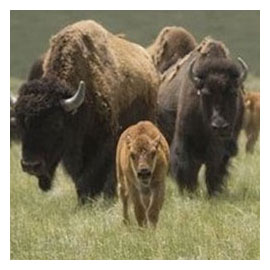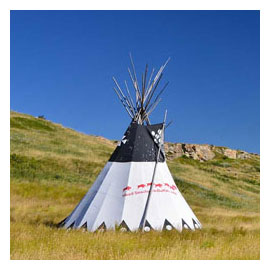The Bison Story
Restoring a Nearly Extinct Keystone Species

Between 180,000 and 135,000 years ago, a new species crossed the Ice Age land bridge linking Siberia and Alaska, migrating down into the central plains and in time helping transform. By the time of European colonization, they may have spread as far east as the Tidewater along the Atlantic coast and numbered from 30 to 60 million animals. They are the North American bison (Bison bison), and as they gradually evolved, so did the Great Plains.
By the latter half of the 19th century, westard migration and the guns and disease they brought, along with industrial expansion
saw those numbers plummet to the point of near exinction. By 1890 fewer than 500 bison existed and most of those were in Canada.
Today, after more than a century of successful conservation management, often driven by personal passion, North America's
herds now number more than half a million, 85% of them thought to be in private herds, large and small. The remainder freely roam federal and
state ranges like Yellowstone and the Blackhills. In short, while their recovery is assured, their work at restoring a lost ecosystem
has barely begun.

